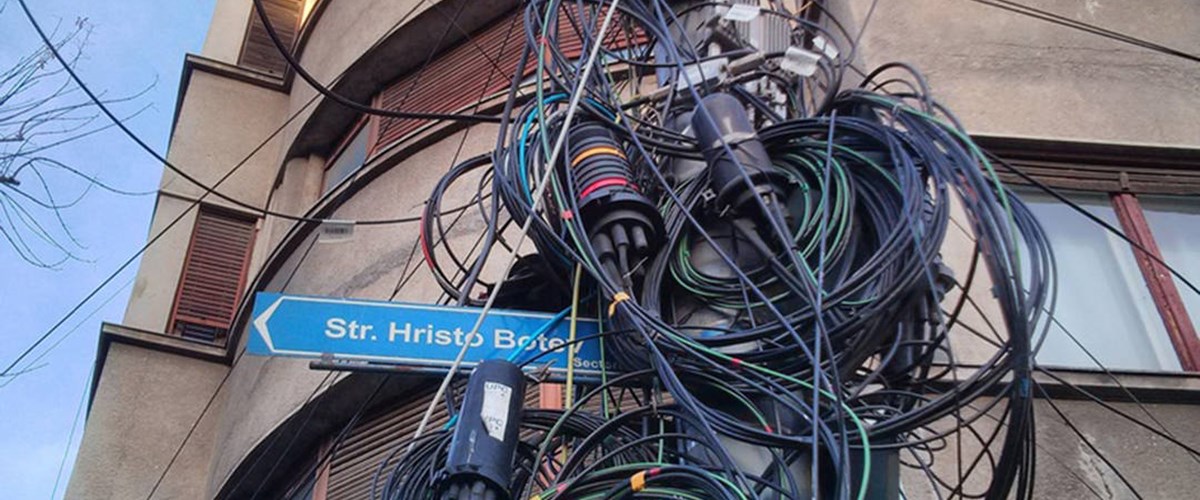
Creator: PxHere - License: CC BY-SA 4.0
In today's fast-paced business environment, network downtime can be catastrophic. It can result in lost revenue, decreased productivity, and a damaged reputation. While many factors can cause network downtime, one factor that often gets overlooked is poor network pre-wire and cabling. In this article, we will discuss how network pre-wire and cabling can reduce network downtime and what you can do to improve your network's reliability.
What is Network Pre-Wire?
Network pre-wire is the process of installing network cabling and infrastructure before the building's walls are constructed. It involves planning and designing the network infrastructure layout and installing cabling and other components such as patch panels, racks, and cabinets. Network pre-wire ensures that the network infrastructure is in place and ready to use before the building's walls are built. This approach offers several advantages over traditional cabling methods, including:
• Reduced installation time and costs
• Enhanced flexibility for future network upgrades
• Minimized disruptions during network upgrades and maintenance
Why is Network Pre-Wire Important for Reducing Network Downtime?
Network downtime can occur due to several factors such as hardware failures, software issues, cyber-attacks, and human errors. However, poor network pre-wire and cabling can also be a contributing factor to network downtime. Here are some reasons why:
1. Poor Cabling Infrastructure: Poor cabling infrastructure can lead to data loss, slow data transfer, and intermittent network connectivity issues. Faulty cables and connectors can cause signal interference and crosstalk, leading to data packet loss and network downtime.
2. Inadequate Network Capacity: Inadequate network capacity can cause network congestion, leading to slow data transfer speeds and network downtime. Proper network pre-wire and cabling ensure that the network infrastructure can handle the required data transfer capacity and future upgrades.
3. Cable Mismanagement: Improper cable management can result in cable damage, loss, and disconnections, leading to network downtime. Network pre-wire ensures that cables are routed and managed correctly, reducing the risk of cable damage and disconnections.
How Network Pre-Wire and Cabling Can Reduce Network Downtime
Proper network pre-wire and cabling can significantly reduce network downtime by addressing the issues mentioned above. Here are some ways in which network pre-wire and cabling can reduce network downtime:
1. Enhanced Network Reliability: Network pre-wire and cabling ensure that the network infrastructure is correctly installed and configured, reducing the risk of network downtime. Proper cable management, cable testing, and certification ensure that the cabling infrastructure is reliable and operates at optimal performance levels.
2. Increased Network Performance: Proper network pre-wire and cabling ensure that the network infrastructure is optimized for data transfer and capacity requirements. This approach ensures that the network can handle the required data transfer speeds and capacity without causing network downtime due to congestion or data loss.
3. Simplified Network Maintenance: Proper network pre-wire and cabling make network maintenance and upgrades more straightforward and less disruptive. Well-organized cabling infrastructure and patch panels make it easier to troubleshoot network issues and upgrade network components.
What Can You Do to Improve Your Network Pre-Wire and Cabling?
Here are some tips to help you improve your network pre-wire and cabling:
1. Hire Professional Network Cabling Services: Professional network cabling services have the expertise and equipment to install and configure network cabling infrastructure correctly. They can also provide cable testing and certification to ensure that the cabling infrastructure operates at optimal performance levels.
2. Use High-Quality Cabling Components: High-quality cabling components, such as cables, connectors, and patch panels, ensure that the cabling infrastructure is reliable and operates at optimal performance levels. Cheap and low-quality components may result in poor network performance and network downtime
3. Plan for Future Network Upgrades: Proper network pre-wire and cabling should take into account future network upgrades and capacity requirements. Planning for future upgrades ensures that the network infrastructure can handle future demands without causing network downtime or performance issues.
4. Maintain Proper Cable Management: Proper cable management ensures that cables are routed and managed correctly, reducing the risk of cable damage, disconnections, and loss. Labeling cables and organizing patch panels can simplify network troubleshooting and maintenance.
5. Regularly Test and Certify Cabling Infrastructure: Regularly testing and certifying the cabling infrastructure can identify potential issues and ensure that the cabling infrastructure operates at optimal performance levels. Cable testing can detect issues such as signal interference, crosstalk, and data packet loss.
Conclusion
Proper network pre-wire and cabling are essential for reducing network downtime and improving network reliability and performance. Poor network pre-wire and cabling can lead to network downtime, slow data transfer, and poor network performance. Hiring professional network cabling services, using high-quality cabling components, planning for future network upgrades, maintaining proper cable management, and regularly testing and certifying the cabling infrastructure can help improve network reliability and reduce network downtime. By following these tips, you can ensure that your network infrastructure is reliable, optimized for performance, and capable of handling future network demands.